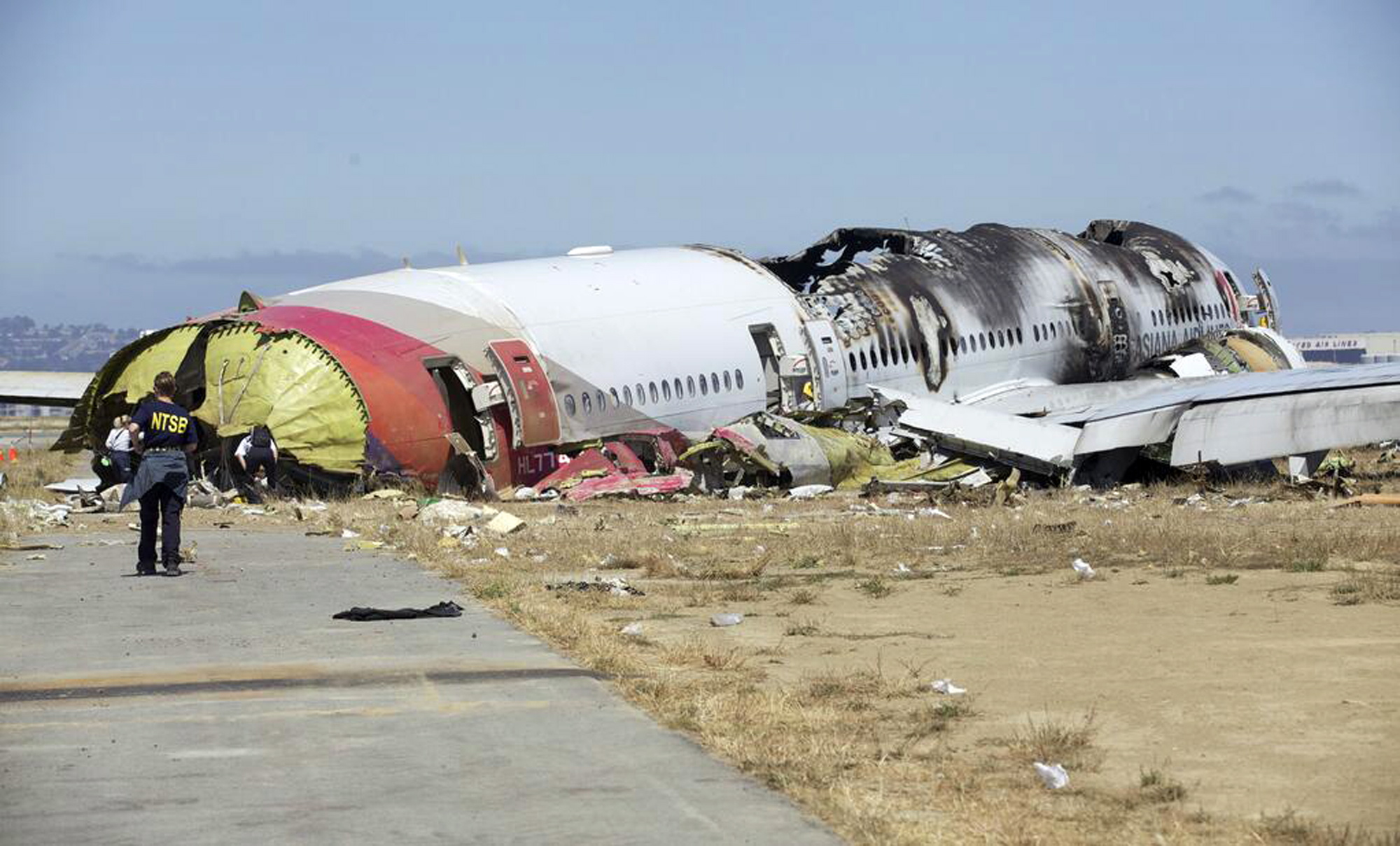During 18 years in service, the Boeing 777 has developed a reputation as one of the world’s safest commercial airplanes.
The only serious crash of the twin-engine, widebodied jet occurred on Jan. 17, 2008, when a British Airways 777 lost power and crashed short of the runway at London’s Heathrow Airport.
A landing gear collapsed and a strut pierced the passenger floor, yet apart from one broken leg there were no serious injuries.
The crash led to regulatory action after investigators determined a buildup of ice in the fuel lines caused the power failure, according to news reports.
Outside of that accident, the so-called “Triple Seven” has amassed a stellar safety record.
Since entering service in June 1995, the long-range plane has flown about five million flights, accumulating more than 18 million flight hours, according to Boeing’s website. As of last month, Boeing had delivered more than 1,100 of the planes to airlines around the world, The Associated Press reported.
“The 777 has a fantastic record,” Tom Haueter, who retired last year from the National Transportation Safety Board (NTSB), where he was the head of aviation accident investigations, was quoted Saturday by The Associated Press.
Saturday’s crash at San Francisco International Airport of an Asiana Airlines flight from Seoul, South Korea, “bears an eerie similarity” to the 2008 crash, said John Nance, a veteran airline pilot who lives in Washington state and serves as aviation expert for ABC News.
In that crash, investigators determined that ice built up during the flight over a polar route, The Associated Press reported in 2009. Investigators found that when the pilots applied thrust for landing, the ice dislodged and blocked the flow of fuel.
Nance said the crew of the British Airway flights got no response when they pushed the plane to full throttle at an altitude of 600 feet as they approached the airport.
On Saturday, the Asiana flight was coming in “too low and too slow,” indicating a possible flight-control problem, Nance said, basing his observations on reports the plane hit the breakwater and that its nose was pointed high in the air at the time of the crash.
“So the question is, did they push the throttles up like British Airways and not get anything,” Nance said, noting that the plane had been flying about 12 hours in extremely cold conditions.
As for the low approach, Nance said, “That is something no pilot would voluntarily do.”
The question is why did that happen, he said, noting information from the flight-data recorder will be crucial.
“So there is a lot to be determined here,” Nance said.
In a statement released Saturday, Boeing said it would provide technical assistance to the NTSB in its investigation of the San Francisco crash.
Nance said the ice problem attributed to the 2008 crash should have been solved, with the lack of a repeat since then an indicator of that.
In response to that crash, the Federal Aviation Administration (FAA) proposed a safety directive after a similar move by European regulators that called for redesigning a system that heats fuel and cools oil in some Trent engines made by Rolls-Royce and installed on some Boeing 777 jets, The Associated Press reported in the 2009 story.
The work was to have been completed by January 2011, according to the story.
It was not clear Saturday if the timetable was met, although The Associated Press reported Saturday that the Trent engines were fixed to prevent similar problems.
In 2009, Boeing officials said there were about 50 such planes operating in the United States, The Associated Press reported.
Haueter, the former NTSB official, told The Associated Press he was doubtful the Asiana crash will be linked to the same icing problem that caused the British Airways accident since changes were made after that crash to prevent further incidents.
“Most accidents happen during takeoff and landing anyway,” he said.Information from Seattle Times archives was included in this story.



